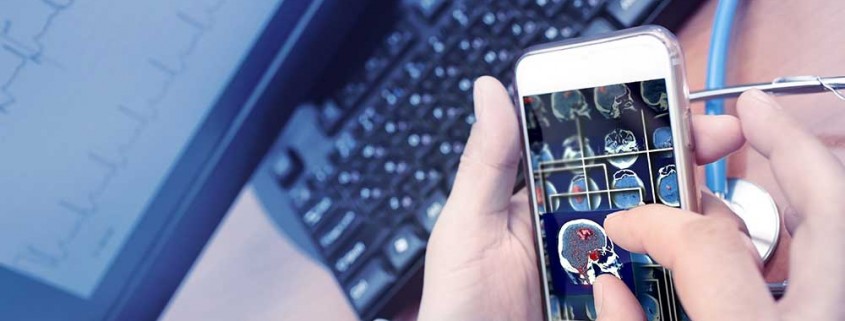Make Way for More Face Time, Less Screen Time in the Exam Room
Last month I wrote about it being a “zeitgeist moment” for physician-patient communication. And it is, with everything from healthcare reform to outcomes research reinforcing the centrality of the physician-patient relationship as the “heart and soul” of effective medicine, even in today’s fast-paced, high-tech healthcare environment.
But what an uphill battle it still can be.
The latest wrench thrown into the works has arrived in the form of electronic medical records. In general, of course, these are good things intended to support more efficient and effective patient care. But they’ve had unintended consequences – a major one being that computers are now taking up valuable physical and psychic real estate between physician and patient in the exam room.
The Wall Street Journal recently reported on a study by researchers at Northwestern University finding that doctors using electronic health records spent about a third of patient visits looking at a computer screen. This is not progress – and patients know it. According to another recent study in JAMA Internal Medicine, patients rated the care they received lower when doctors looked at a computer screen a lot during patient examinations.
Computers won’t be barred from the exam room anytime soon, nor should they be. However, as Indiana University School of Medicine Professor of Medicine Richard Frankel, Ph.D. said in commentary accompanying the JAMA study, “The medical profession can ill afford not to develop and implement patient-centric, exam room computer-use best practices.” He has developed a model called POISED to remind physicians of best practices for computer use with patients:
- Prepare: Review electronic medical record before seeing patient
- Orient: Briefly explain how computer will be used during the appointment
- Information gathering: Enter data when with patients to show their concerns are being taken seriously
- Share: Show the computer screen to patients so they can see what has been typed, signaling partnership and also serving as a way to check that what is being entered is what was said or meant
- Educate: Show patients graphic representations of information over time, such as patient’s weight, blood pressure or blood glucose
- Debrief: Use ‘teach back’ or ‘talk back’ format to assess the degree to which the patient understands recommendations or instructions
“Communication” is multi-layered. It is not just about what is said but also about what is perceived. Skilled doctors are alert not only to what their patients tell them but also to the more subtle signs they notice when looking at someone – affect, pallor, posture, function, etc. These things can convey a great deal that patients might not explicitly say. New technologies in the exam room need to be judged based on their potential to bolster or short-circuit this crucial aspect of the physician-patient relationship.





